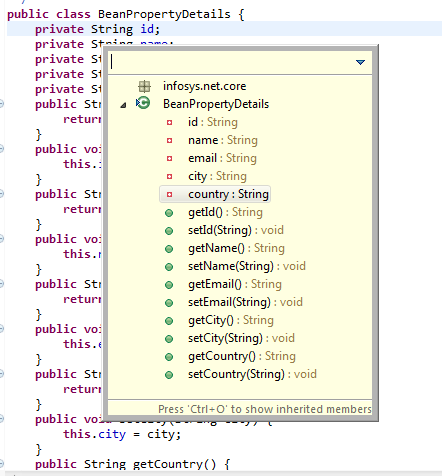When you are working within a class, often you would need to look up or navigate to the specific method in the same class. If you are not aware of CTRL + O short cut, then probably you would have searched the method using search dialog or scroll down manually to the method. However, if you type CTRL + O, Eclipse will prompt a inline dialog box with the list of variables and methods defined in the same class. Private members will be displayed in red icon and public members will be displayed with green icon. Developer can click on the method and navigate to that location. It saves lot of time. Lets look at the screenshot of how it looks like.


 Eclipse Tips : How To Add User Library In Eclipse
Eclipse Tips : How To Add User Library In Eclipse